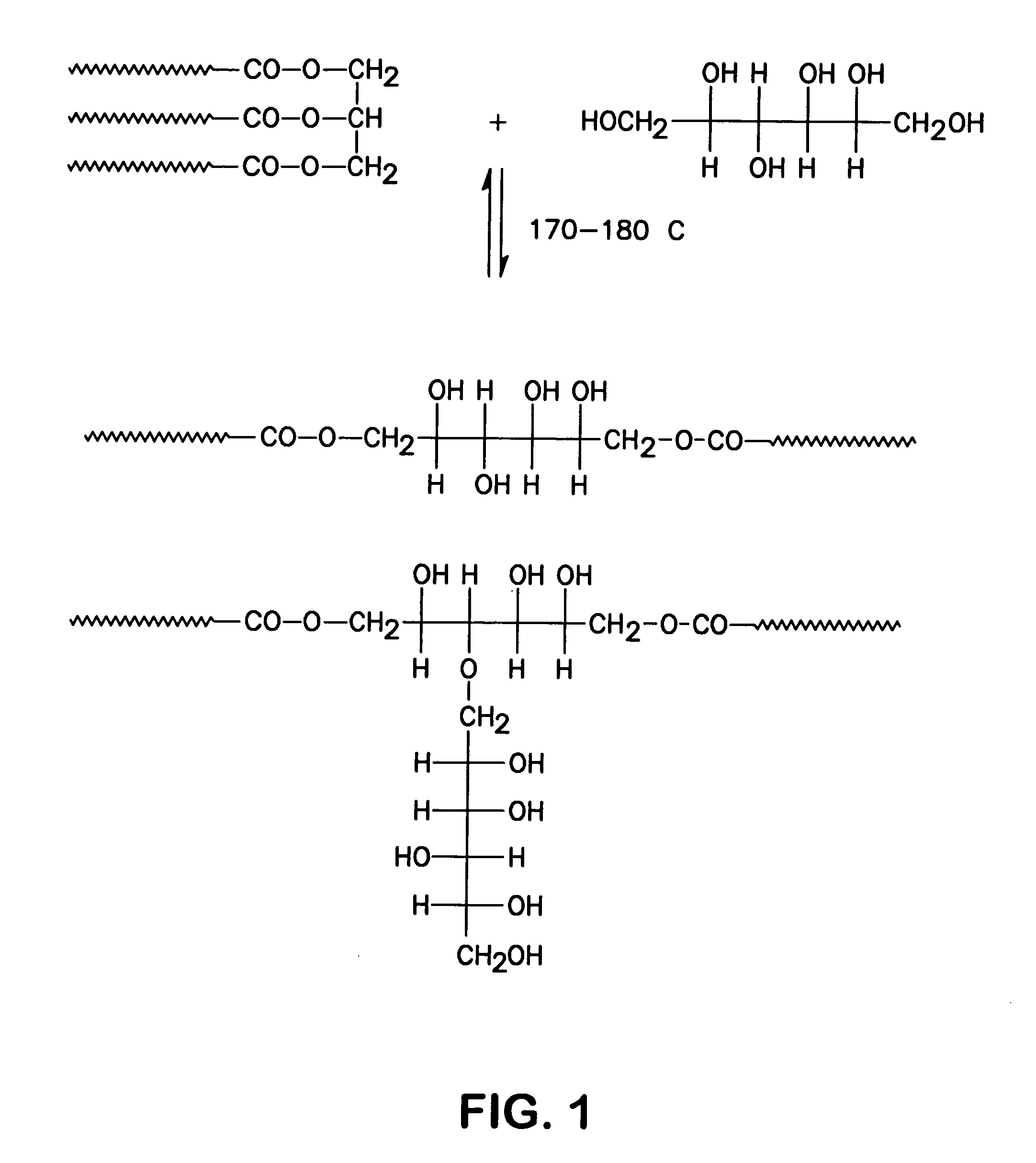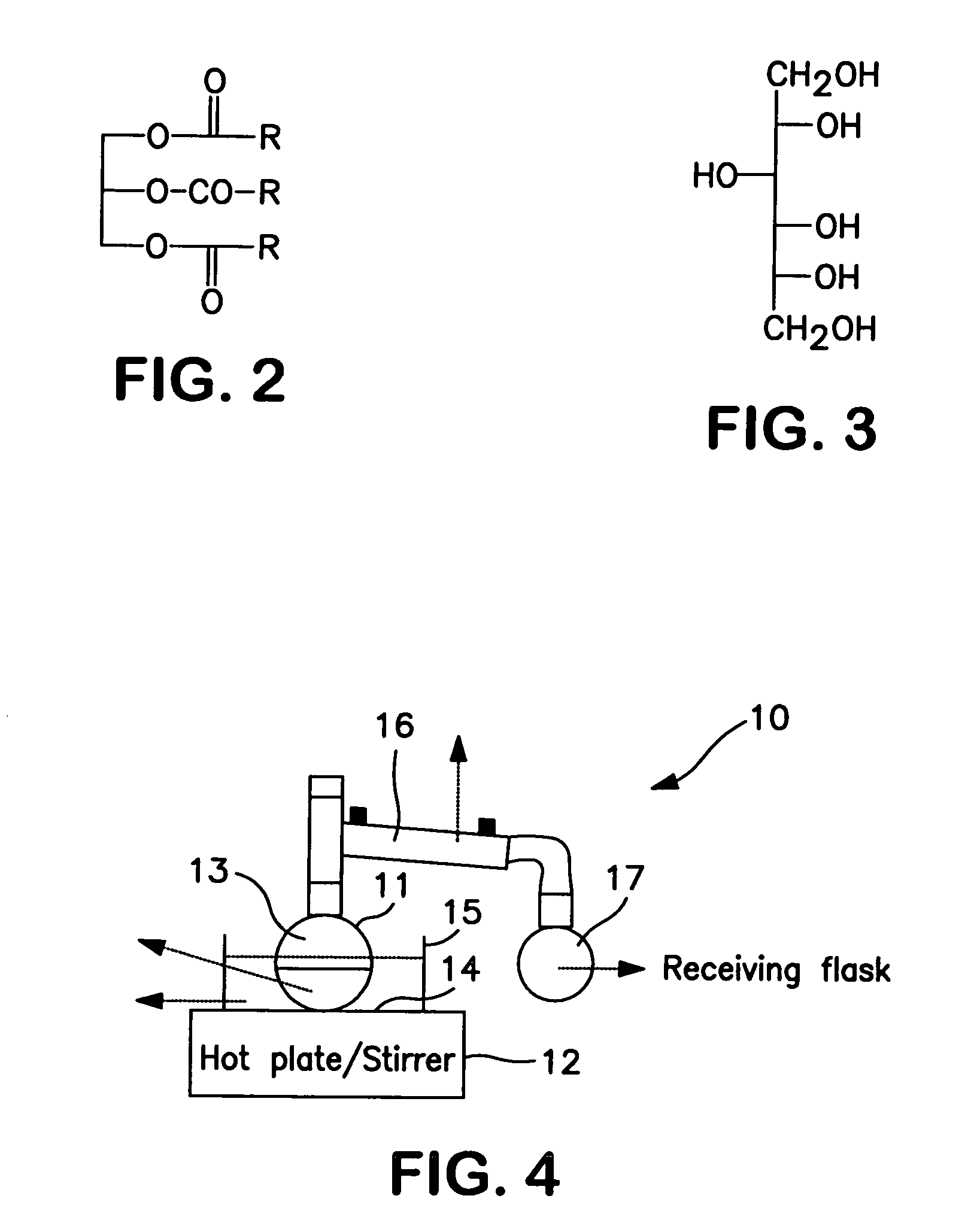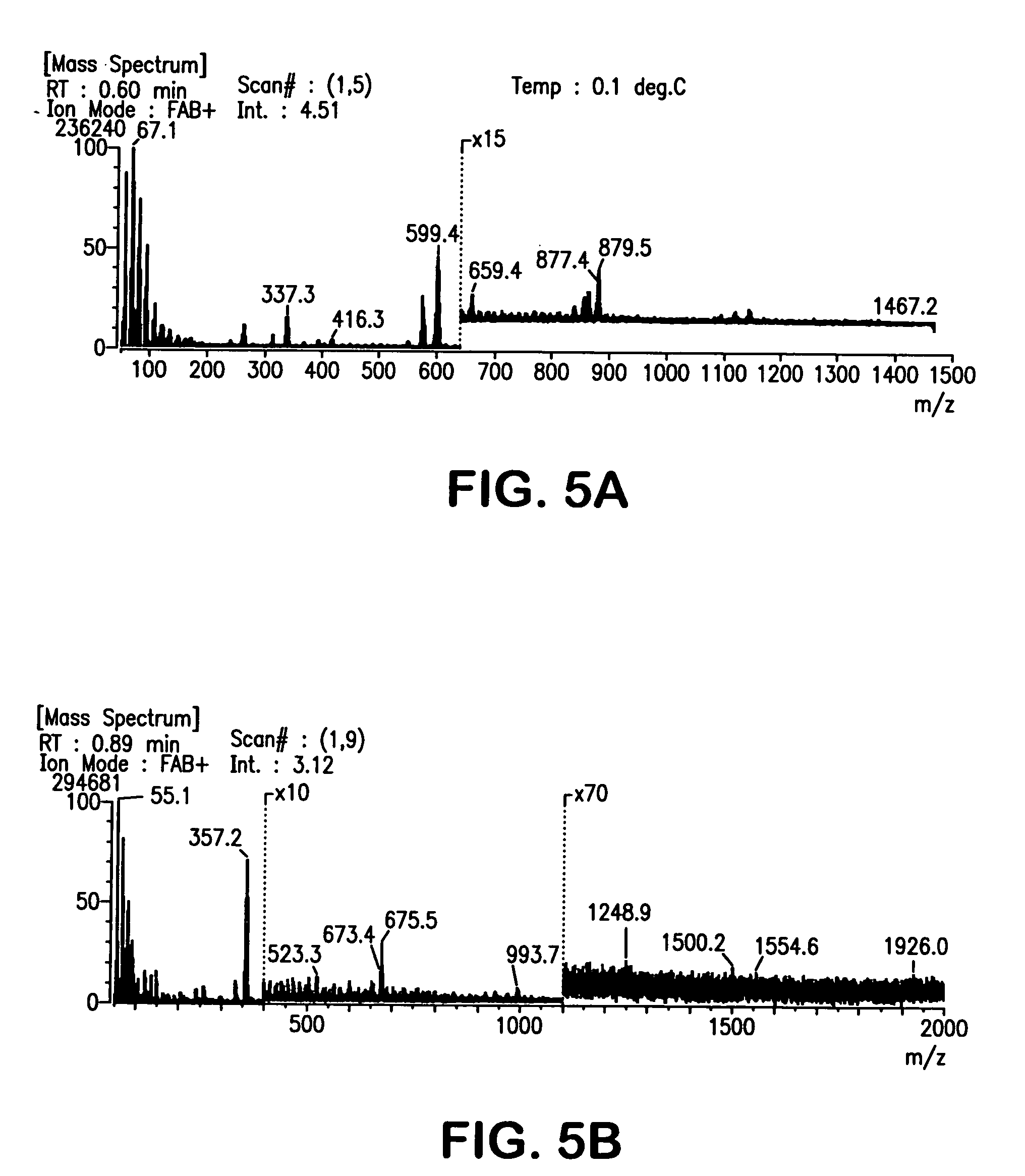Polyol fatty acid polyesters process and polyurethanes therefrom
a polyol and polyurethane technology, applied in the direction of fatty-oil/fat refining, other chemical processes, applications, etc., can solve the problems of castor oil-based polyurethanes not finding a wide application range, unpredictable petroleum prices, and environmental problems in the production of these polyols
- Summary
- Abstract
- Description
- Claims
- Application Information
AI Technical Summary
Benefits of technology
Problems solved by technology
Method used
Image
Examples
specific examples
[0057]The following examples are intended to promote a further understanding of the present invention. They are not meant in any way to limit the scope of this invention. Examples 1 to 8 show the preparation of the polyol compositions. Examples 9 to 11 show the preparations of the polyurethanes from these compositions.
example 1
[0058]A soybean polyol was made from soybean oil (200.42 g), sorbitol (20.50 g), potassium hydroxide (6.06 g). Soybean oil, sorbitol and KOH were placed in a 500-milliliter one-necked flask 11 equipped with a condenser 16 and a magnetic stirrer as shown in FIG. 3. The flask was placed in an oil bath 14 thermostated at 185° C. After 2 hours, the flask was removed from the oil bath and allowed to cool down to room temperature. The mixture was dissolved in 150 ml of chloroform and recrystallized overnight in refrigerator. The formed precipitate was filtered off, the solvent evaporated under vacuum. The resulting product was a polyol whose hydroxyl number was determined by titration and found to be 151 mg KOH / g. Yield: 95 wt %.
example 2
[0059]A soybean polyol was made from soybean oil (200.10 g), sorbitol (20.47 g), KOH (6.55 g). Soybean oil, sorbitol and KOH were placed in a 500-milliliter one-necked flask equipped with a condenser and a magnetic stirrer. The flask was placed in an oil bath thermostated at 180° C. After homogenization of the solution, dibutyltin dilaurate (0.80 g) was added. The flask was maintained at 185° C. for 1 hour then cooled down to room temperature. The mixture was dissolved in 150 ml of chloroform and recrystallized overnight in refrigerator °. The formed precipitate was filtered off, the solvent evaporated under vacuum. The resulting product was a polyol whose hydroxyl number was determined by titration and found to be 164 mg KOH / g. Yield: 92 wt %.
PUM
| Property | Measurement | Unit |
|---|---|---|
| volatilization temperature | aaaaa | aaaaa |
| temperatures | aaaaa | aaaaa |
| temperature | aaaaa | aaaaa |
Abstract
Description
Claims
Application Information
 Login to View More
Login to View More - R&D
- Intellectual Property
- Life Sciences
- Materials
- Tech Scout
- Unparalleled Data Quality
- Higher Quality Content
- 60% Fewer Hallucinations
Browse by: Latest US Patents, China's latest patents, Technical Efficacy Thesaurus, Application Domain, Technology Topic, Popular Technical Reports.
© 2025 PatSnap. All rights reserved.Legal|Privacy policy|Modern Slavery Act Transparency Statement|Sitemap|About US| Contact US: help@patsnap.com



